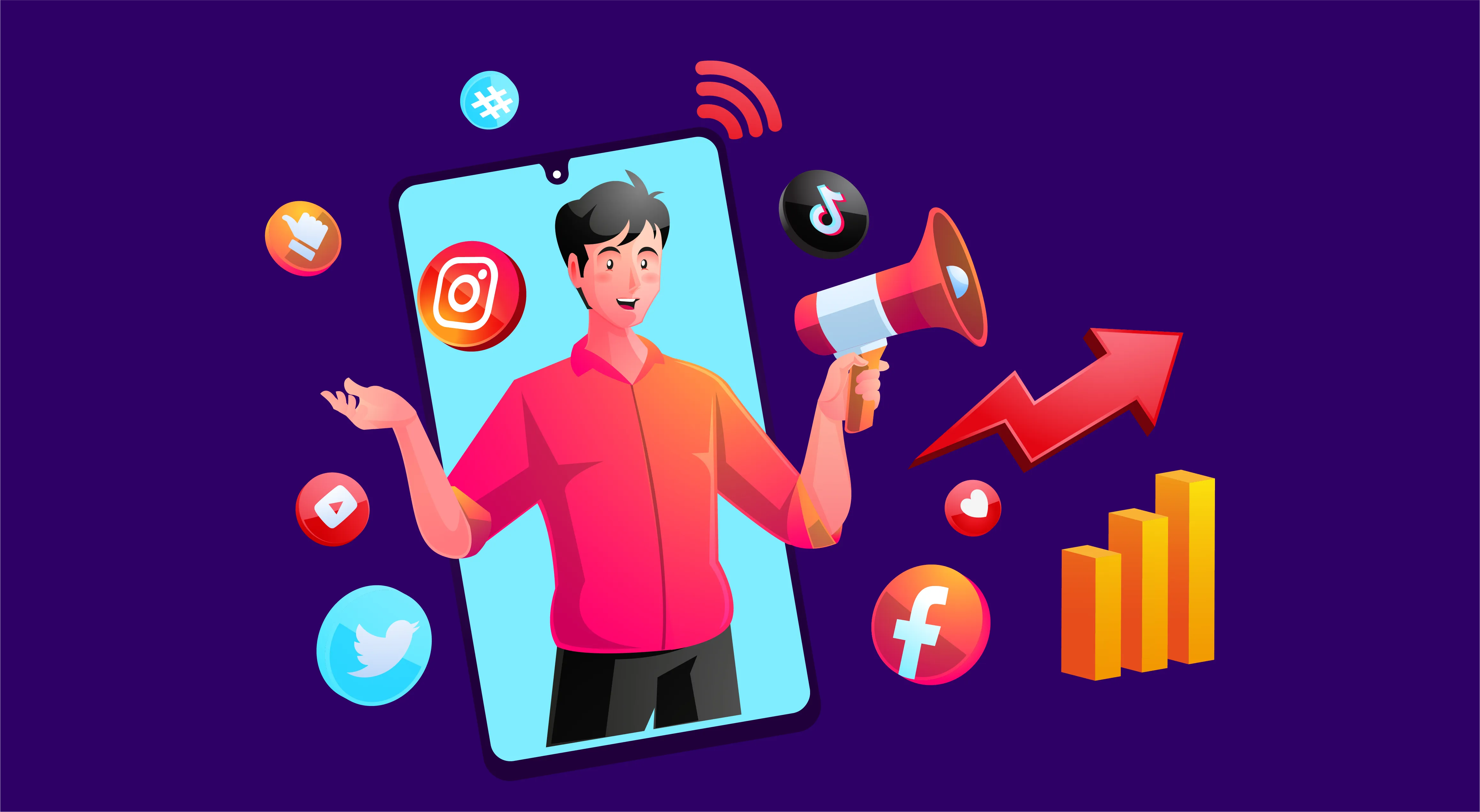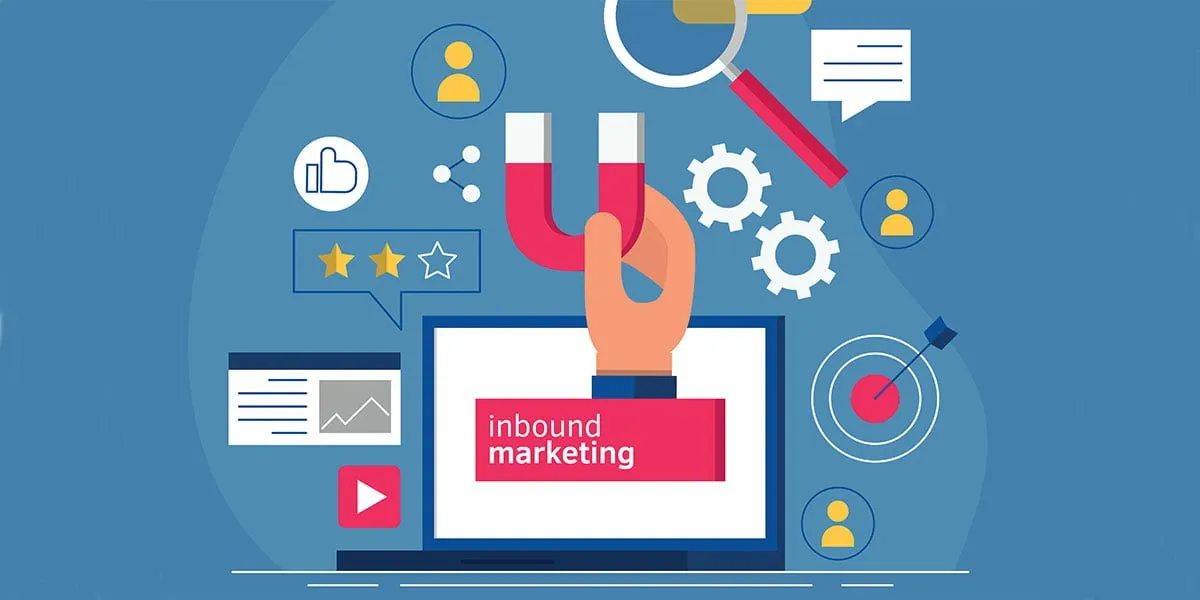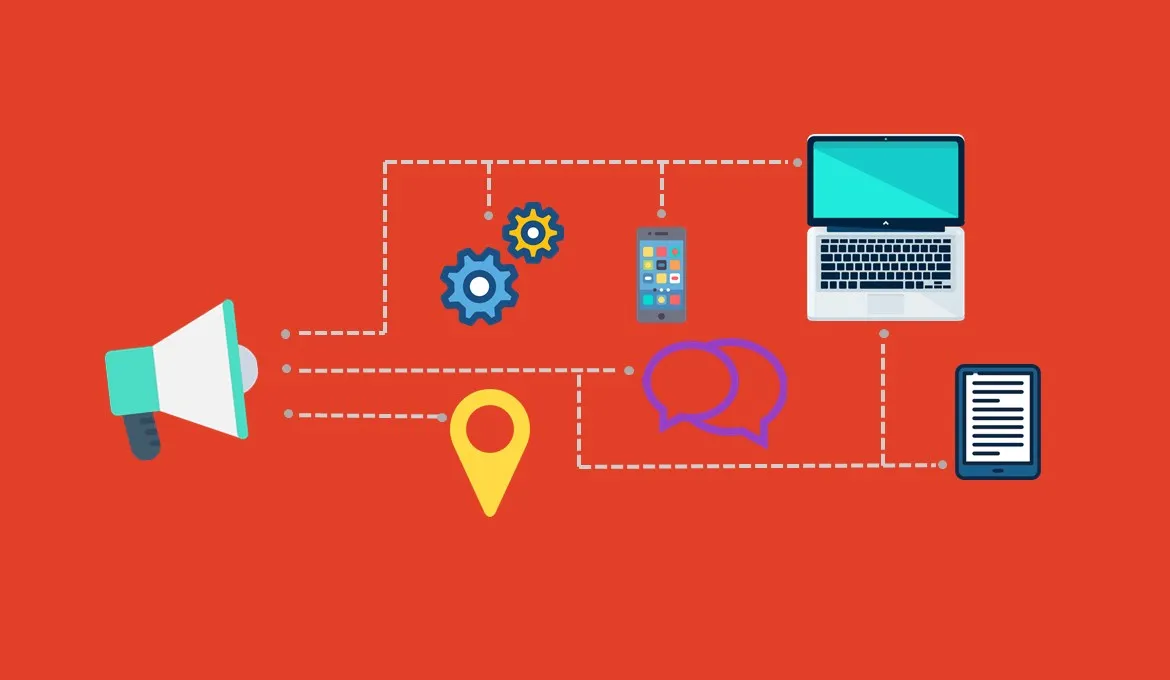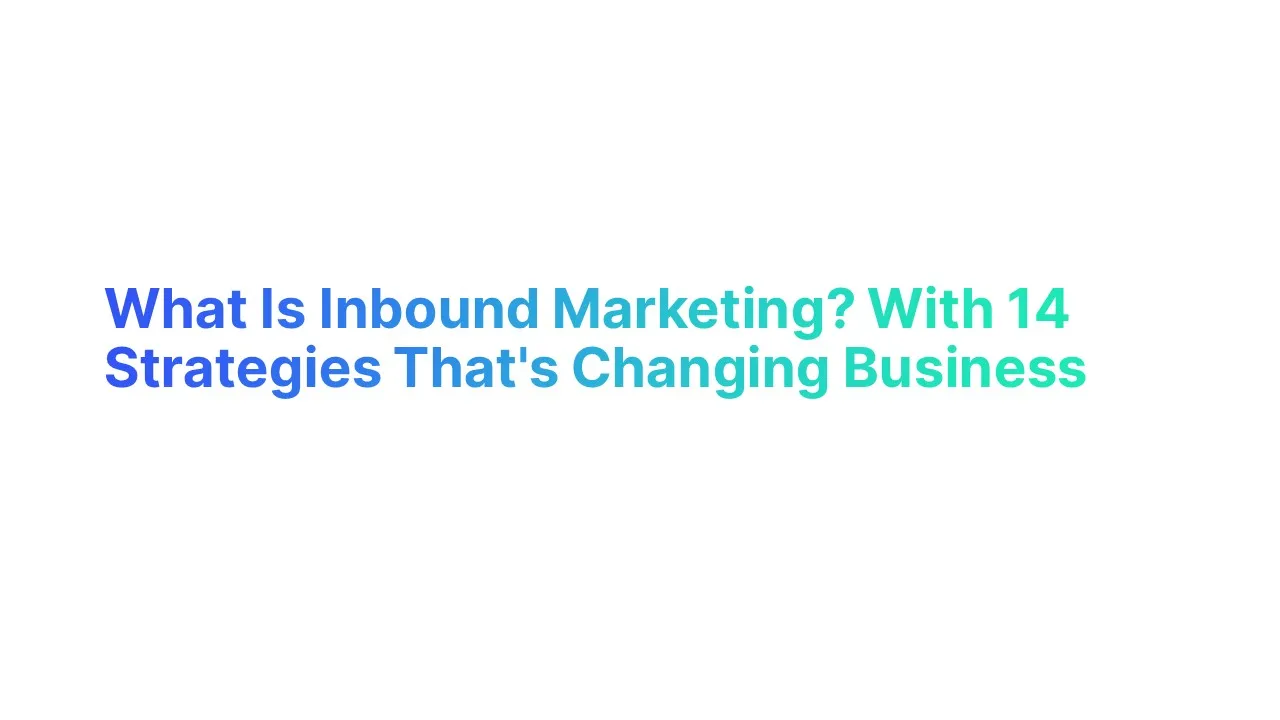Introduction to Inbound Marketing

What is Inbound Marketing
Inbound marketing is a business methodology that attracts customers by creating valuable content and tailored experiences. Unlike traditional outbound marketing methods that often involve cold calling, direct mail, or paid advertising, inbound marketing focuses on building meaningful connections and solving problems to attract potential customers organically.
Key Components of Inbound Marketing:
- Content Creation: This involves developing content that answers the needs and questions of potential customers. For instance, blogs that provide actionable advice attract 55% more visitors than those that don't.
- SEO (Search Engine Optimization): SEO strategies enhance the visibility of your content on search engines. Approximately 68% of online experiences begin with a search engine, making SEO critical for inbound marketing.
- Social Media: Platforms like Facebook, Twitter, and LinkedIn allow businesses to engage with a broader audience. Social media influences the purchasing decisions of 71% of consumers who have had a positive experience with a brand online.
Inbound Marketing Overview
Inbound marketing is designed to nurture customer relationships on a deeper level than traditional marketing methods.
By aligning the content you publish with your customer's interests, you naturally attract inbound traffic that you can then convert, close, and delight over time.
Advantages of Inbound Marketing:
- Cost-effectiveness: It costs 62% less per lead than traditional outbound marketing.
- Higher ROI: Businesses that primarily rely on inbound marketing save over $14 for every newly acquired customer.
- Long-term Benefits: Inbound marketing strategies like blogging and SEO build a lasting digital footprint, providing compounding returns. For example, 80% of new leads for businesses come from blog posts that were published months or even years ago.
Inbound Marketing vs Outbound Marketing
How Does Inbound Marketing Work

Inbound marketing works by creating a strategic framework centered around attracting, engaging, and delighting customers. This method pivots on delivering quality content that is aligned with the needs and interests of potential customers, rather than pushing products or services onto consumers.
Steps in the Inbound Marketing Process:
- Attract: The first step is to draw in the right traffic to your website. This is typically achieved through SEO, quality content, and social media engagement. For instance, companies using blogs as part of their marketing strategy generate 67% more leads than those that don't.
- Engage: Once visitors are on your site, the goal is to convert them into leads through forms, contact pages, and compelling call-to-action (CTA) buttons. Engaging content offers solutions and includes interactive tools like calculators or educational webinars. Statistics show that personalized CTAs convert 202% better than standard versions.
- Delight: Post-conversion, the focus shifts to turning leads into promoters of your brand. This is done through email marketing, dynamic content, and social signals tailored to individual user needs, ensuring ongoing satisfaction.
Examples of Inbound Marketing
Inbound marketing can manifest in various forms, each designed to address the specific stages of the customer journey. Here are several concrete examples:
Blogs and Articles
- Educational Blogs: A tech company might write in-depth blog posts about how to enhance digital security, targeting IT professionals looking to update their knowledge.
- How-To Guides: Home improvement stores often publish DIY renovation guides, helping homeowners tackle projects while introducing various tools and materials they sell.
Social Media Campaigns
- Interactive Posts: Brands like Nike often use inspirational posts combined with direct interactions to engage their audience, boosting both brand visibility and personal customer relationships.
- Live Q&A Sessions: Many businesses hold live sessions on platforms like Instagram or Facebook to answer customer questions in real-time, providing immediate value.
Email Marketing
- Newsletters: A monthly newsletter that offers expert advice, industry news, and how-to tips can keep your audience engaged and encourage repeat visits to your website.
- Segmented Email Campaigns: Tailoring email content based on user behavior and preferences increases relevance and engagement, with segmented campaigns driving an increase in revenue by up to 760%.
How to Create an Inbound Marketing Strategy

Creating an effective inbound marketing strategy involves several key steps to attract, engage, and delight your target audience. Here’s a detailed guide on how to craft a successful inbound marketing strategy:
1. Define Your Goals
Setting clear, measurable goals is essential for any inbound marketing strategy.
- Increase Website Traffic: Aim to boost your website traffic by 50% in six months.
- Generate Leads: Set a target to acquire 200 new leads per month.
- Enhance Customer Engagement: Focus on improving customer engagement by 30%.
2. Identify Your Target Audience
Understanding who your potential customers are is crucial. Develop detailed buyer personas to identify their needs, preferences, and behaviors.
- Demographics: Consider age, gender, income, and education level.
- Psychographics: Look at interests, values, and lifestyle choices.
- Behavioral Data: Analyze purchase history and website interactions.
3. Map the Buyer’s Journey
Outline the stages your customers go through from awareness to decision.
- Awareness Stage: Potential customers realize they have a problem or need.
- Consideration Stage: They start looking for solutions and researching options.
- Decision Stage: They decide on a solution and make a purchase.
4. Conduct a Competitive Analysis
Understanding your competition helps you identify opportunities and gaps in the market.
- Identify Competitors: List your main competitors and analyze their strategies.
- Evaluate Strengths and Weaknesses: Assess what your competitors do well and where they fall short.
- Benchmarking: Compare your performance metrics against your competitors to find areas for improvement.
5. Audit Your Current Content
Start by evaluating your existing content to identify strengths, weaknesses, and gaps.
- Content Inventory: List all your current content pieces, including blogs, videos, and social media posts.
- Performance Analysis: Assess the performance of each content piece based on metrics like traffic, engagement, and conversion rates.
- Gap Identification: Identify missing content that your target audience might be searching for.
6. Develop a Content Plan
A well-structured content plan ensures consistent and strategic content creation.
- Content Calendar: Create a calendar outlining when and what type of content will be published.
- Content Types: Plan a mix of blogs, videos, infographics, and social media posts to engage different audience segments.
- Keyword Integration: Incorporate relevant keywords like "inbound marketing strategy" and "inbound marketing techniques" into your content plan.
7. Choose the Right Tools
Selecting the appropriate tools is crucial for executing and managing your inbound marketing strategy effectively.
- SEO Tools: Use tools like SEMrush and Ahrefs for keyword research and SEO optimization.
- Content Management Systems (CMS): Platforms like WordPress or HubSpot for creating and managing content.
- Marketing Automation: Tools like HubSpot and Marketo to automate email marketing, lead nurturing, and campaign tracking.
8. Set Up Analytics and Tracking
Implement analytics to monitor the performance of your inbound marketing efforts and make data-driven decisions.
- Google Analytics: Set up Google Analytics to track website traffic, user behavior, and conversion rates.
- Marketing Dashboards: Use dashboards to visualize key metrics and performance indicators.
- Regular Reporting: Schedule regular reporting to review performance and adjust strategies as needed.
9. Allocate Resources
Ensure you have the necessary resources, including budget, personnel, and tools, to implement your inbound marketing strategy.
- Budget Allocation: Determine how much budget you will allocate to content creation, tools, and promotion.
- Team Roles: Assign specific roles and responsibilities to team members, such as content creators, SEO specialists, and social media managers.
- Time Management: Plan timelines for each stage of your strategy to ensure timely execution and monitoring.
14 Inbound Marketing Strategies

Sure, here are 14 effective inbound marketing strategies:
1. Create High-Quality Blog Content
High-quality blog content is essential for attracting and engaging your target audience. Blogs are a cornerstone of inbound marketing and can significantly boost your website’s visibility.
- SEO Optimization: Use relevant keywords like "inbound marketing strategies" to rank higher on search engines.
- Consistency: Companies that blog consistently generate 55% more website visitors than those that don’t.
- Engagement: High-quality blog posts can drive 67% more leads monthly.
2. Develop E-books and Whitepapers
E-books and whitepapers provide in-depth information that positions your brand as an industry authority. These resources can be used to capture leads by offering them in exchange for contact information.
- Lead Generation: Businesses using e-books see a 45% increase in lead generation.
- Educational Value: Provide detailed insights and solutions to common problems in your industry.
- Trust Building: E-books and whitepapers help establish trust and credibility with your audience.
3. Leverage Video Marketing
Video marketing is a powerful tool for engaging your audience and conveying complex information quickly. Videos are highly shareable and can boost your inbound marketing efforts significantly.
- Engagement: Video content can increase organic traffic from search engines by 157%.
- Retention: Viewers retain 95% of a message when they watch it in a video compared to 10% when reading it in text.
- Conversions: Including a video on a landing page can boost conversion rates by 80%.
4. Optimize Your Website for SEO
Optimizing your website for SEO is crucial for improving visibility and attracting organic traffic. Proper SEO techniques ensure your content reaches the right audience.
- Keyword Integration: Use relevant keywords like "inbound marketing strategies" throughout your website content.
- On-Page SEO: Include keywords in titles, headers, and meta descriptions. For example, optimizing meta descriptions can improve click-through rates by up to 5.8%.
- Technical SEO: Enhance site speed, mobile responsiveness, and site architecture. Websites that load within 2 seconds have a 15% higher conversion rate.
5. Start a Podcast
Starting a podcast allows you to share valuable insights and engage with your audience in a more personal way. Podcasts are becoming an increasingly popular medium for content consumption.
- Audience Engagement: 41% of Americans listen to podcasts monthly, making it a growing platform to reach new audiences.
- Content Variety: Share interviews, industry news, and expert advice.
- Brand Authority: Establish your brand as an industry leader by consistently providing valuable content.
6. Use Social Media Marketing
Social media marketing helps you connect with your audience, share content, and drive traffic to your website. It’s a vital component of an inbound marketing strategy.
- Platform Selection: Focus on platforms where your audience is most active, like Facebook, LinkedIn, and Instagram.
- Content Sharing: Share blog posts, videos, and infographics to engage your followers. Visual content is 40 times more likely to get shared on social media.
- Community Engagement: Respond to comments, participate in discussions, and use social listening tools to understand your audience better. Companies that engage in social media marketing see a 24% increase in customer satisfaction.
7. Implement Email Marketing Campaigns
Email marketing campaigns are an effective way to nurture leads and keep your audience engaged. Personalized and relevant emails can significantly boost your marketing efforts.
- Personalization: Tailor emails based on user behavior and preferences. Personalized emails deliver six times higher transaction rates.
- Automation: Use marketing automation tools to send timely and relevant emails. Automated emails account for 21% of email marketing revenue.
- Segmentation: Segment your email list to target specific groups with relevant content, which can improve click-through rates by 100%.
8. Create Interactive Content
Interactive content like quizzes, polls, and calculators engages users and encourages them to interact with your brand. This type of content can provide valuable insights and enhance user experience.
- Engagement: Interactive content generates twice the engagement as static content.
- Lead Generation: Collect user data through interactive elements to better understand your audience and generate leads.
- Sharing: People are more likely to share interactive content, increasing your reach. Quizzes and polls are shared 190% more often than other types of content.
9. Host Webinars and Live Streams
Webinars and live streams offer real-time interaction with your audience, providing valuable information and building trust. These events can position your brand as an industry leader.
- Lead Generation: 73% of B2B marketers say webinars are the best way to generate high-quality leads.
- Audience Engagement: Live interactions can significantly enhance engagement, with 87% of participants saying they are more likely to interact with a brand after attending a webinar.
- Educational Content: Use webinars to provide in-depth knowledge and solutions, showcasing your expertise. Companies using webinars report a 20-40% attendance rate for registrants.
10. Encourage User-Generated Content
User-generated content (UGC) is any form of content created by your customers or audience. Encouraging UGC can boost engagement and trust, which is crucial for a successful inbound marketing campaign.
- Authenticity: UGC is perceived as more authentic and trustworthy. 79% of people say UGC highly impacts their purchasing decisions.
- Engagement: Encourage customers to share their experiences with your products or services on social media using branded hashtags. This approach generates relevant content that resonates with your audience.
- Community Building: Highlighting UGC on your website or social media can foster a sense of community and loyalty. Brands that use UGC see a 28% higher engagement rate.
11. Utilize Influencer Marketing
Influencer marketing involves partnering with individuals who have a significant following to promote your brand. This strategy can help you reach a broader and more engaged audience, enhancing the benefits of inbound marketing.
- Reach: Influencers can help you tap into new audiences. 49% of consumers depend on influencer recommendations.
- Trust: Collaborating with influencers can increase trust and credibility. Influencer marketing campaigns earn $5.78 for every dollar spent.
- Content Variety: Influencers can create diverse content formats such as reviews, unboxings, and tutorials that resonate with their followers, providing relevant content to your target audience.
12. Focus on Local SEO
Local SEO optimizes your online presence to attract more business from relevant local searches. This is especially important for small and medium-sized businesses, highlighting why inbound marketing is important for local visibility.
- Google My Business: Claim and optimize your Google My Business listing. Businesses with complete listings are 70% more likely to attract location visits.
- Local Keywords: Use local keywords in your content and meta descriptions. For example, "inbound marketing services in [city]" can improve local search visibility, a key component of digital marketing.
- Local Citations: Ensure your business is listed in local directories and review sites. Accurate and consistent information across listings can improve your local search rankings, making your inbound marketing campaign more successful.
13. Run Remarketing Campaigns
Remarketing campaigns allow you to target visitors who have previously engaged with your website but didn’t convert. This strategy is vital for reinforcing brand awareness and encouraging return visits, making your inbound marketing efforts more effective.
- Increased Conversion Rates: Remarketing can increase conversion rates by up to 70% as it targets users who have already shown interest in your products or services.
- Personalized Ads: Deliver relevant content through personalized ads based on users’ previous interactions with your site, enhancing the user experience.
- Enhanced ROI: Businesses can see a return on investment (ROI) of up to 1300% from remarketing campaigns, demonstrating the benefits of inbound marketing.
14. Engage in Guest Blogging
Guest blogging involves writing and publishing articles on other reputable websites in your industry. This strategy helps build your authority, drive traffic, and improve SEO, showcasing why inbound marketing is important.
- Brand Exposure: Guest blogging exposes your brand to a new audience, driving traffic back to your site. Websites that engage in guest blogging see a 97% increase in backlinks.
- Authority Building: Writing for reputable sites enhances your credibility and positions you as an industry leader. This can lead to more opportunities and partnerships within your niche.
- SEO Benefits: Guest blogs often include backlinks to your website, which are crucial for improving your search engine rankings and boosting your overall digital marketing strategy
How to Measure the Success of Your Inbound Marketing Efforts

Measuring the success of your inbound marketing efforts is crucial for understanding what works and what needs improvement. Here’s a detailed guide on how to effectively measure and analyze your inbound marketing performance:
1. Website Traffic Analysis
Monitoring your website traffic is the first step in evaluating your inbound marketing efforts.
- Total Visits: Track the total number of visits to your site. A successful inbound marketing campaign typically sees a steady increase in traffic over time.
- Traffic Sources: Analyze where your traffic is coming from—organic search, social media, direct visits, or referrals. Tools like Google Analytics can provide detailed insights.
- Top Pages: Identify which pages are attracting the most visitors. Pages with high traffic are often aligned with effective inbound marketing strategies.
2. Lead Generation Metrics
Lead generation is a primary goal of inbound marketing. Measuring the quality and quantity of leads is essential.
- Conversion Rates: Calculate the percentage of visitors who become leads by filling out a form, signing up for a newsletter, or downloading a resource. A higher conversion rate indicates more effective lead generation efforts.
- Lead Source: Track which channels are generating the most leads—organic search, social media, email marketing, etc. This helps in allocating resources effectively.
- Lead Quality: Assess the quality of leads by their engagement level and conversion potential. Higher quality leads often result from targeted and relevant content.
3. SEO Performance
SEO is a critical component of inbound marketing. Monitoring your SEO performance can reveal the effectiveness of your content and optimization efforts.
- Keyword Rankings: Track the rankings of relevant keywords like "inbound marketing strategy" and "successful inbound marketing campaign." Higher rankings typically lead to increased visibility and traffic.
- Organic Traffic: Measure the amount of traffic coming from organic search. A successful inbound marketing campaign will show growth in organic traffic.
- Backlinks: Analyze the number and quality of backlinks to your site. High-quality backlinks from reputable sites improve your SEO and credibility.
4. Engagement Metrics
Engagement metrics help you understand how your audience interacts with your content.
- Bounce Rate: A lower bounce rate indicates that visitors find your content relevant and engaging. Aim for a bounce rate below 50%.
- Time on Page: Measure the average time visitors spend on your pages. More time indicates higher engagement and interest.
- Social Shares: Track the number of times your content is shared on social media. High shares can increase your reach and drive more traffic.
5. ROI and Revenue Metrics
Ultimately, the success of your inbound marketing efforts should translate into revenue growth and a positive return on investment.
- Customer Acquisition Cost (CAC): Calculate how much you spend to acquire a new customer. Lowering your CAC while increasing customer acquisition indicates a successful strategy.
- Lifetime Value (LTV): Measure the total revenue a customer generates over their lifetime. A higher LTV suggests strong customer relationships and effective inbound marketing.
- Return on Investment (ROI): Calculate the ROI of your inbound marketing efforts by comparing the revenue generated to the cost of your marketing activities. A positive ROI shows that your inbound marketing is driving financial success.
Concluding Thoughts
Understanding the difference between inbound and outbound marketing is crucial for modern businesses. Inbound marketing, with its focus on valuable content and personalized experiences, proves to be more effective and cost-efficient.
Inbound marketing important to track website traffic, lead generation, SEO performance, engagement metrics, and ROI to ensure your strategies drive growth and provide a strong return on investment.
Implementing the 14 strategies—from high-quality blog content to guest blogging—can significantly enhance your inbound marketing, build lasting relationships, and drive sustainable business growth.





.jpg)

.jpg)
